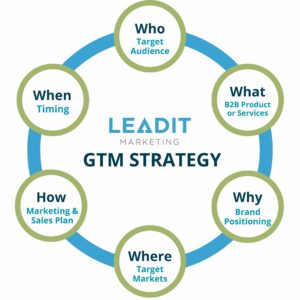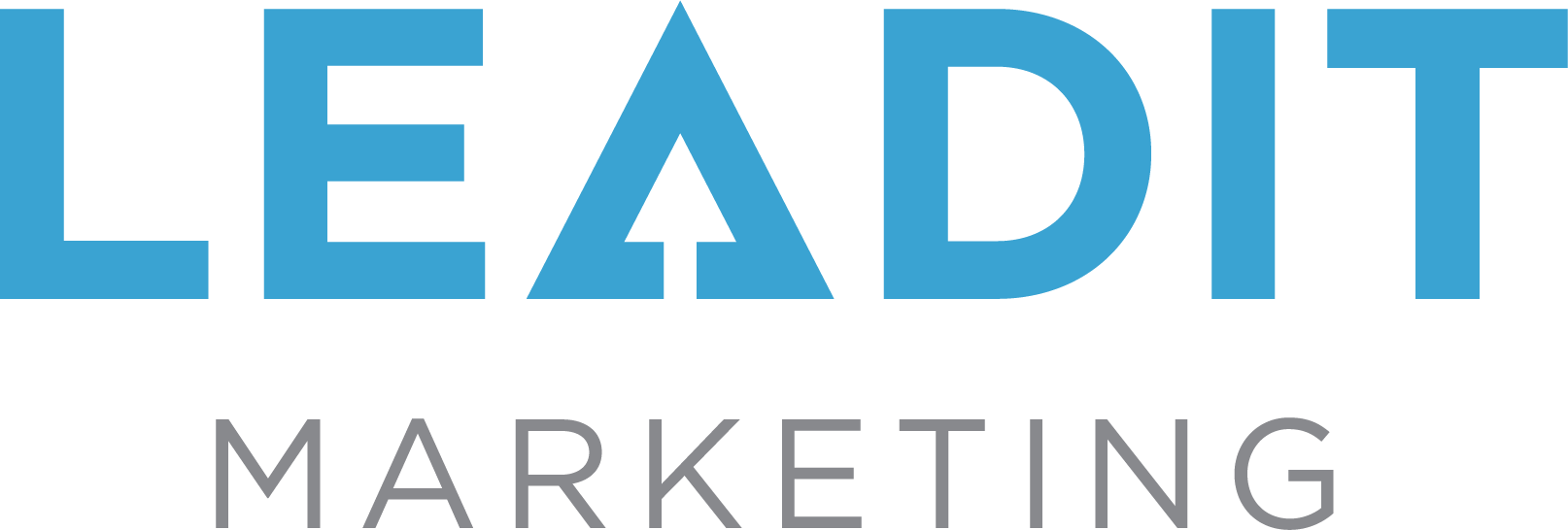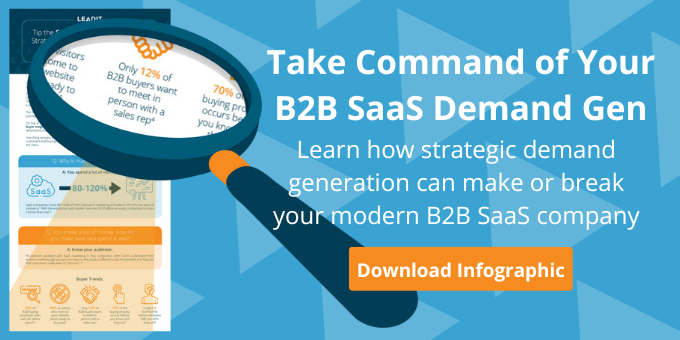With Your SaaS Go-To-Market Strategy, You’re Never One and Done
Whether you’re launching a new SaaS company, updating your SaaS brand, or launching a new feature, product or service there are several very common missteps that all point to critical areas of misalignment in fast-growing SaaS companies.
At Leadit, we help tech and SaaS companies build digital marketing strategies that work now and build foundations for better marketing tomorrow.

Along the way, we’ve seen a few common problems plague SaaS brands at every stage of their marketing maturity, such as:
- Failing to understand customers in the ways that matter most for all key functions of the business including: marketing, sales, product development, and customer support
- Silos where teams lose sight of common goals and targets for the company
- Lack of focus on the ideal customer profile that’s best suited for your product
- Limited access to persona data and lack of knowledge about how to create ideal customer profiles, which results in limited insights into your buyers’ pains and processes
- Market knowledge that’s not centralized, not available, and not leveraged across your entire sales, support, product and marketing departments
- Missed emerging market opportunities because of a strategy that’s not updated often enough
This is why we are beginning to see more and more conversations around the importance of operationalizing GTM strategies and why this initiative must be owned by the C-Suite.
“GTM is a transformational process for accelerating your path to market with high-performing revenue teams delivering a Connected customer experience.”
-Sangram Vajre, Author of Move: The 4-Question Go-To-Market Framework
Let’s get you up close and personal to your customers to drive continuous results for your SaaS organization. Check out our eBook: 5 Tips to Build a Better B2B SaaS Brand Messaging Strategy
Without an Evolving Go-To-Market Strategy, You Could Be a Revolving Door Company.
A go-to-market project, also known as a go-to-market strategy or just GTM, is the process of developing a detailed plan for how your SaaS organization will engage with very specific target markets and personas. GTM strategies should benefit all areas of your SaaS organization because they study the buyer and/or customer and help you map out a clear path to attract, convert, nurture and retain specific markets or buyers.
A thorough GTM process serves as a roadmap for the SaaS organization and includes everything from competitive research, buyer research, customer research, sales, and marketing KPIs, sales channels, market messaging, pricing strategies, launch plans, and branding. In short, if you need to understand the customer for any part of your business, the GTM strategy should be your single source of truth to make all business decisions.
Know More, Grow More: The Benefits of a SaaS Go-to-Market Project
If you don’t act now on a go-to-market project, you’re missing out on massive benefits.
Reduce Risk Across the Organization: One of the most significant benefits of a GTM project is lowered risk across the organization. By gathering customer and buyer insights to understand your target market, you reduce the chances that you’ll launch a product that’s marketed to the wrong people (marketing), with the wrong message (marketing and sales), or without the features your customers want (product marketing), and without the experience that your customers expect (customer support/customer experience).
Build a Positive B2B SaaS Customer Experience: Creating a go-to-market strategy helps keep your company more in-tune with the constantly changing needs of your customers. This should help you make your products better, your services more essential, and customer loyalty more likely to last. In fact, according to Neil Patel, Most SaaS revenue comes from existing SaaS customers. According to Gartner, a full 80% of all future revenue will come from just a fraction (20%) of SaaS current customers. If a company increases customer retention by only 5%, you can increase business profitability by 75%, say researchers at Bain & Co. So marketing, sales, product development, and customer support.
Organizational Alignment and Focus: Your GTM strategy is all about getting your target market to see what you see in your product or service. It’s a plan that details how your SaaS organization will engage with customers to drive sales and gain a competitive advantage. The biggest benefit is it acts as an umbrella so your SaaS team to align your marketing, sales, and product goals under one umbrella.
Eliminate Confusion and Build Scalable Processes: When you provide a unified plan for your entire B2B SaaS organization, you no longer have to worry about departments working at odds with each other on the way to a product launch. The purpose of this is to get everyone on the same page and make sure everyone is equipped with the tools to do their job successfully. As a startup, scalability is essential for successful outcomes and growth. Processes and repeatability need to be mastered early in your growth.
 Turn Your SaaS Company into a Customer-Centric Marketing Strategy Machine
Turn Your SaaS Company into a Customer-Centric Marketing Strategy Machine
Here are the Key Components of Leadit’s GTM Strategy:
Qualitative Customer | Buyer Research
Qualitative customer research consists of all the insights that can only be gleaned by actually talking to your customers and getting curious. It’s best collected through customer interviews, and helps you understand what and how your buyers or customers think. While the era of big data has put a great emphasis on quantitative data, and for good reason, we 100% know there’s still no replacement for actually talking to your customers.
Persona Insights and Targeting Data
Persona insights include key data about the values, decisions, and thought processes of your target market. Great buyer personas will include buying habits, attitudes, pain points, language, influencers, and buying criteria for your SaaS products and services. Gathering and analyzing persona insights are an essential part of any GTM project. Know more, grow more.
Want to create an effective B2B tech messaging strategy? Then watch our Webinar: from Tacky to Techy to up your messaging strategy game.
Campaign Planning and Execution Roadmap: A campaign plan and execution roadmap for all marketing, sales, and customer experience tactics is absolutely essential. The goal of this plan is to help your SaaS company focus, calendar, guide, and track all your combined efforts to ensure everyone is working towards a common plan.
Goals and Reporting: What do you want your GTM efforts to achieve, and how will you quantify whether you’ve achieved that goal(s)? Goals can be specific to each department executing but there should be company and revenue goals that everyone is fully aligned to. There should also be alignment on what data will help you measure success and how will you gather, track, and analyze that data?
Messaging and Promotions: Now that you’re clear on your target market and buyer persona a key focus of the GTM strategy is to determine how your SaaS company will connect, attract, nurture and retain customers. The messaging and promotions component of our GTM project focuses on how you will build a relationship with your buyers and customers through your brand experience and through your written and approved messaging strategy.
Content Strategy: The content strategy provides a roadmap of an important campaign to place at different stages of the buying lifecycle. This is also one of the more artistic sides of marketing. Here is where we connect with the customers to build trust so we can guide them through the buying process
Budgeting | Resourcing: This part of the GTM strategy details who is responsible for the different elements of the campaign. How will the team work as a group and within their units? How much will be spent on the different elements of the campaign? How will we report on the success of the efforts?
You have to know your market to go to market. The return is in the learning. Schedule a call with our performance marketing experts if you are interested in talking GTM with some of our GTM nerds.














